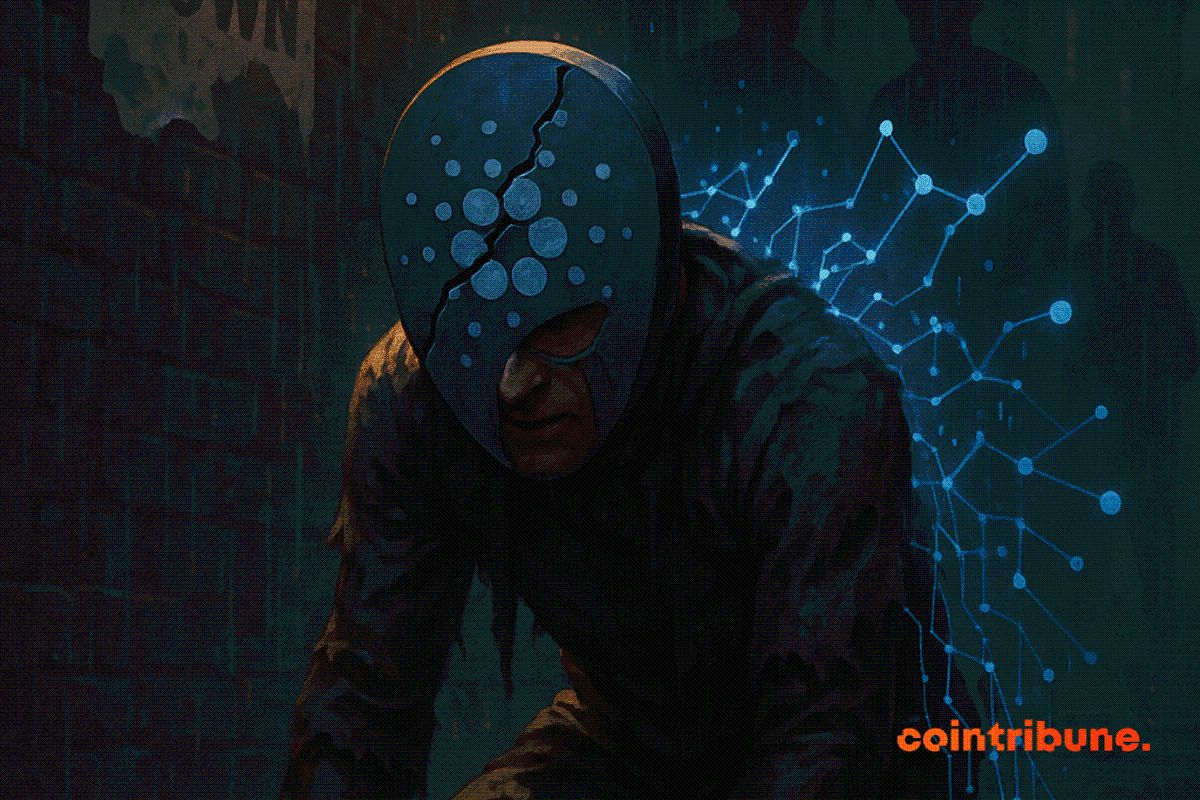Umbra Boosts MetaDAO: How Does the "Anti-Rug" Mechanism Work?
MetaDAO platform token has surged more than fourfold this month.
MetaDAO platform token has surged more than 4x this month.
Written by: KarenZ, Foresight News
Last week (October 10), the privacy protocol Umbra completed its community sale on the MetaDAO platform. This public sale attracted over 10,000 participants, with total subscriptions approaching $155 million, which is 200 times the project's planned minimum fundraising amount.
After the sale ended, the project team set the actual fundraising cap at $3 million, and each subscriber ultimately received only about 2% of their subscription quota, with the remaining funds refunded via the original route.
More notably, even against the backdrop of a significant pullback in the crypto market, the UMBRA token price has shown strong resilience: the current price ($1.5) is 4 times higher than the initial offering price ($0.3). This performance not only confirms the market's confidence in the privacy sector but also highlights the appeal of MetaDAO's unique fundraising model.
Meanwhile, the MetaDAO platform token META has also performed strongly, with its market cap briefly surpassing $200 million today, hitting a record high, and posting a gain of more than 4x so far this month.
As a Solana ecosystem privacy protocol built on Arcium technology, Umbra's popularity is inseparable from the explosive growth of the privacy sector. But while the market's attention is focused on Umbra itself, its issuer MetaDAO platform may hide even greater opportunities — this so-called anti-Rug fundraising tool and organization with "market-driven governance" is opening up a new path for token issuance in crypto projects.
MetaDAO: From "Zero VC Start" to Paradigm Backing
MetaDAO's starting point was not the luxurious fundraising typical of traditional crypto projects, but rather an exploration of solutions to the pain points of crypto industry fundraising.
Traditional ICOs have long suffered from three major pain points: founders lose motivation after receiving fixed token allocations, early investors "get in and out quickly" and dump tokens, and communities lack stickiness, causing projects to fall into the dilemma of "early hype but no long-term growth." MetaDAO is designed to address these issues, with a core logic of replacing "single token voting" with "market-driven governance" and "fixed token allocation" with "performance-based incentives."
- Birth and Early Development: In October 2022, founder Proph3t (@metaproph3t) began developing this organization focused on Futarchy governance (i.e., "market decision system," which will be explained in detail later), and officially established it in November 2023. Initially, it only airdropped tokens to about 65 people and started with $10,000 as the initial treasury fund.
- Milestone Fundraising: In August 2024, MetaDAO achieved a key breakthrough — securing a $2.2 million seed round led by crypto VC giant Paradigm. Paradigm's favor for MetaDAO stemmed from its Futarchy governance model, which highly aligns with Paradigm's layout in the prediction market field. At the time, CoinDesk quoted MetaDAO's anonymous founder Proph3t as saying that Paradigm would hold 3,035 META tokens, accounting for 14.6% of META's total supply, making it the largest single holder of META. About 30 angel investors additionally purchased 965 META tokens, bringing the total fundraising to $2,229,950.
- Lean Team: According to the latest proposal on MetaDAO, the team is small, with core members including only Proph3t, co-founder and engineer Kollan, a part-time designer, and an intern responsible for Twitter operations. MetaDAO currently has about $1.8 million in cash reserves, which can support about 24 months of operation at the current scale. Note: Proph3t's recent proposal to "sell $6 million worth of META tokens at a discount to expand the team and increase operational reserves" was rejected by the community.
MetaDAO Operating Mechanism
Simply put, MetaDAO is not just a "fundraising tool," but also transforms project founders and investors from "short-term profit seekers" to "long-term co-builders." It allows founders to obtain startup funds while ensuring through mechanisms that they must do a good job with the project to receive more rewards; it gives investors the opportunity to participate in early-stage projects while avoiding "total loss of principal" through transparent rules.
MetaDAO has now developed into a Solana-based Launchpad platform and governance system, with the core goal of addressing "Rug" risks and incentive misalignment in traditional crypto fundraising. The new MetaDAO platform officially opened to the public on October 6, 2025 (UTC+8), with the first batch supporting fundraising for 5 projects.
Anti-Rug ICO: Embedding "Security" into the Mechanism
If a project chooses to issue on MetaDAO, the team must accept some restrictions that may seem unusual in the traditional world. For example, MetaDAO locks in risks from the following dimensions:
- Funds Locked in "Futarchy Governance Treasury": The USDC raised is not given directly to the founders but is deposited into a treasury managed by Futarchy. Every large expenditure must be validated by the market (i.e., traders believe the expenditure will increase token value before it is approved).
- IP Ownership Entity: The project's core assets (domain names, software, social media accounts, etc.) are transferred to a dedicated legal entity, not the founders personally, to prevent founders from "taking away core assets."
- Founder Rewards Tied to Project Success or Failure: Founders do not receive a large number of tokens at the start, but are rewarded through a "performance tier mechanism" — tokens are unlocked in 5 batches, corresponding to the token price reaching 2x, 4x, 8x, 16x, and 32x the ICO price, with the earliest unlock no sooner than 18 months after the ICO.
- Budget Constraints: The team must commit to setting a budget cap (no more than one-sixth of the minimum fundraising amount), and expenditures exceeding this amount require approval from the governance department.
How Is the ICO Mechanism Set Up?
MetaDAO's ICO mechanism is ingeniously designed to balance the interests of both project teams and investors to some extent:
- Sales Process: Founders must submit information such as the minimum fundraising threshold, team monthly budget, and performance tier settings. Only after approval can the project go live on MetaDAO. Investors have 4 days to subscribe to project tokens using USDC.
- About the Team Incentive Mechanism: The team can choose to allocate up to 15 million tokens (50% of the initial supply) to a price-based performance mechanism. This performance mechanism is divided into 5 tiers: unlocked at 2x, 4x, 8x, 16x, and 32x the ICO price, with the earliest unlock no sooner than 18 months after the ICO (founders can extend the lock-up period).
- Post-Sale Arrangements: If the project fails to reach the minimum threshold, investors' USDC will be refunded. If the sale is successful, the founders announce the amount of subscription funds they choose to accept (there is no cap during the sale), which is said to provide everyone with a fair participation opportunity. Quotas are allocated proportionally, and the remaining funds are refunded via the original route. All USDC will enter the market governance treasury, and the minting rights for new tokens will also be transferred to this treasury. The treasury will provide 20% of the USDC and 5 million tokens to the liquidity pool.
Note: On the evening of the day the Umbra sale ended (UTC+8), all allocated tokens from the sale were unlocked and distributed directly to users' wallets, and the remaining funds were also refunded via the original route.
Futarchy Governance: Let the "Market" Decide, Not "Voting"
MetaDAO does not use the traditional DAO "token voting" (which is easily manipulated by large holders), but instead uses Futarchy to determine project direction — a governance model where "traders vote with capital," i.e., using prediction markets to guide decisions.
The core logic of this governance is based on economist Robin Hanson's idea: people "bet" on the potential impact of proposals on project token value through trading, thus aggregating collective wisdom and ensuring that only proposals deemed by the market to increase value are adopted.
The core logic of MetaDAO's Futarchy governance is:
- Proposal Creation and Activation: For a proposal (such as "withdraw $1 million USDC from the treasury to develop new features," "issue new tokens," "increase/decrease liquidity," etc.), holders must stake tokens to activate it. By default, a proposal requires staking 50,000 tokens (5% of the ICO total) to go live. Staking is only for anti-spam, with no lock-up or slashing risk, and only one proposal can be active at a time.
- Trading Phase: Once the staking condition is met, the project will extract half of the liquidity from the spot market and transfer it to the proposal's conditional market. Traders can conduct conditional trades within 3 days. If they believe the proposal will increase token value, they buy the "pass market" token; otherwise, they buy the "fail market" token.
- Final Decision by "Lagging Price TWAP": To make proposal approval more prudent, MetaDAO sets a passing threshold, making it slightly harder to pass than to fail (1.5% threshold). The core logic of the whole process is: use "lagging TWAP" to filter manipulation, use the "1.5% threshold" to ensure consensus strength, and ultimately let the real judgment of market capital decide whether the proposal aligns with the project's long-term value.
Summary
In an industry where "short-term profit-seeking" prevails, MetaDAO's innovation lies in: using "mechanism design" to lock in security to some extent, and replacing "zero-sum games" with "interest alignment," hoping to form a "community of interests" between founders and investors.
For founders who want to build solidly, MetaDAO provides a path to "fair fundraising without relying on VCs"; for investors seeking safety, MetaDAO reduces "Rug" risk through multi-dimensional rules.
However, it should be noted that the cryptocurrency market is highly volatile, and no mechanism is a "universal insurance": even with mechanism protection, project token prices may still fall sharply due to market trends, business progress, or full unlocking after public sales; at the same time, governance can only prevent "malicious team behavior" and cannot guarantee the project's inevitable success — investors still need to make comprehensive judgments based on project fundamentals and sector prospects.
Disclaimer: The content of this article solely reflects the author's opinion and does not represent the platform in any capacity. This article is not intended to serve as a reference for making investment decisions.
You may also like
Terra Luna Classic Shakes the Crypto Market with Surprising Developments
In Brief LUNC experienced a significant price decline following Do Kwon's sentencing. The court cited over $40 billion losses as a reason for Do Kwon's penalty. Analysts suggest short-term pressure on LUNC may persist, despite long-term community support.

NYDIG: Tokenized Assets Offer Modest Crypto Gains as Growth Depends on Access and Regulation

Cardano Investors Split As Market Fatigue Sets In

